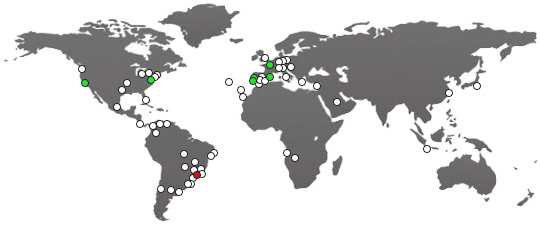Psoriasis
Effects of Aloe Vera Arborescens on Psoriasis
Aloe Vera Arborescens has a very interesting therapeutic potential in the natural treatment of psoriasis — a chronic inflammatory skin condition.
Psoriasis causes scaling, redness, inflammation, and often pain and itching. The gel of Aloe Vera Arborescens acts on several of these symptoms, with benefits recognized in traditional medicine and supported by clinical studies (mostly using Aloe vera barbadensis, but arborescens has a similar composition).
Main Benefits:
1. Local anti-inflammatory action
-
Reduces inflammation in psoriatic plaques
-
Decreases redness and skin swelling
2. Deep skin hydration
-
Soothes and moisturizes dry, crusty patches
-
Helps relieve itching and burning sensations
3. Mild immunomodulatory effect
-
Compounds like acemannan help modulate the local immune response
-
May reduce excessive cell turnover (a key factor in psoriasis)
4. Skin healing and renewal
-
Stimulates fibroblasts and collagen production
-
Promotes faster skin regeneration and reduces scaling with regular use
What does the research say?
A clinical study published in the Journal of the European Academy of Dermatology and Venereology (1996) showed that an Aloe vera (barbadensis) cream significantly improved psoriasis symptoms compared to placebo, with no side effects.
Although this study used the barbadensis variety, arborescens contains similar compounds — and often even more antioxidants — suggesting equivalent benefits.
How to Use Aloe Vera Arborescens for Psoriasis:
1. Topical use (main approach):
-
Apply the pure gel (directly from the leaf) to psoriatic plaques 2 to 3 times a day
-
Allow it to dry naturally
-
May be combined with calendula oil, olive oil, or a few drops of lavender essential oil for added relief
2. Soothing recipe (optional):
Mix:
-
1 tablespoon of Aloe Vera Arborescens gel
-
1 teaspoon of calendula oil or olive oil
-
2 drops of chamomile or lavender essential oil
→ Apply to affected areas and leave on for 30 to 60 minutes (or even overnight)
Important Notes:
Aloe vera does not replace medical treatment for psoriasis (especially in moderate to severe cases), but it can be a safe and effective complementary aid — particularly for mild or localized forms.
Avoid using the yellow part of the leaf (aloin), as it may irritate sensitive skin.







